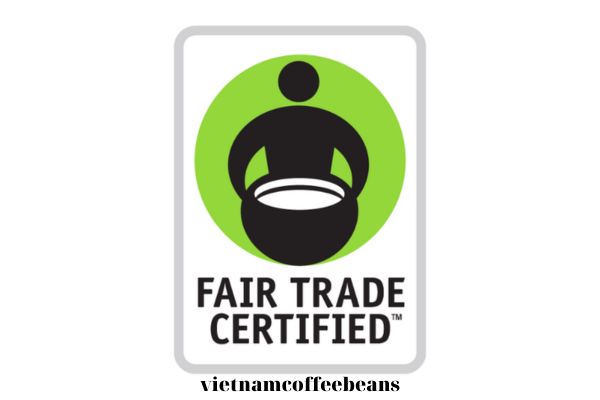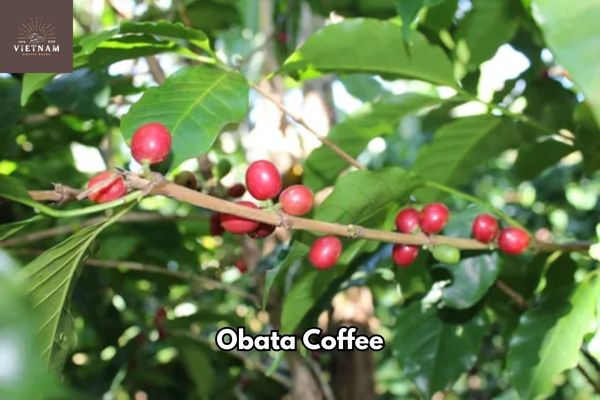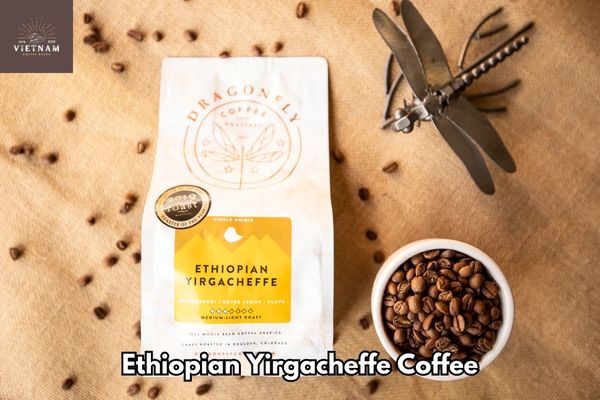As a coffee lover, I’m always curious about different types of beans and their origins. But when I look at the labels in my local coffee shop or grocery store, it can be overwhelming to decipher all the information.
That’s why I decided to do some research and create an overview of decoding coffee bean labels. In this article, we’ll explore the different types of coffee beans and their origins, roast levels and how they impact flavor and aroma, fair trade and organic certifications, single-origin versus blended coffees, as well as understanding flavor notes and tasting profiles.
In addition, you should also learn about some factors to consider when buying beans, such as the type, grade, certification, and freshness of the coffee. They also relate to coffee bean pricing explained.
By the end of this essay, you’ll have a better knowledge of what’s behind the words on your favorite bag of coffee beans.

Coffee Bean Labels: Types of Coffee Beans and Their Origins
You’ll be amazed at the rich and diverse history of coffee bean product, as we explore where different types of beans come from and the stories behind their origins.
Arabica beans are one of the most popular types of coffee beans that originated in Ethiopia. These beans grow at high altitudes and have a delicate flavor with hints of fruit and sweetness. The processing methods used to produce Arabica beans vary depending on the region they come from.
Robusta beans, on the other hand, are known for their robust flavor and higher caffeine content. They are mostly grown in Central Africa but have also spread to Southeast Asia, India, and Brazil. Robusta beans require less attention than Arabica during cultivation but need more care during processing to remove any unwanted flavors.
There are many regional flavor variations for each type of bean depending on factors such as soil composition, altitude, rainfall patterns, and harvesting techniques.
For example, Brazilian coffee has a nutty flavor due to its low acidity levels caused by the soil’s alkaline properties. Colombian coffee is known for its bright acidity with notes of caramel or chocolate due to its high elevation growth areas.
Understanding these variations can help you choose your preferred type of coffee bean product based on taste preferences alone.
Roast Levels and Their Impact on Flavor and Aroma

Now that you’ve found a coffee bean that suits your preferences, let’s talk about how the roast level can affect the flavor and aroma of your morning cup.
Roasting is the process of heating green coffee beans to bring out their unique characteristics. The longer they roast, the darker they become, resulting in a distinct flavor profile. Each roast level has its own set of attributes that impact the taste and smell of your coffee.
Light roasts are roasted for a shorter time at lower temperatures, giving them a lighter color and more acidity than other roast levels. They often have higher smoke points and work well with brewing methods such as pour-over or drip brewing.
Medium roasts are slightly darker than light roasts and have less acidity but still retain some of their natural flavors. They’re versatile enough to be used in many different brewing methods, including espresso and French press.
Dark roasts are roasted at high temperatures for longer periods of time until they reach a dark brown or black color. This results in oils on the surface of the beans which contribute to their boldness but also make them more prone to going stale quickly.
Darker roasts have lower smoke points and may not be suitable for certain brewing methods such as pour-over or drip brewing due to their overpowering nature. However, they work well with espresso-based drinks like lattes or cappuccinos where milk can balance out their bitterness.
In conclusion, understanding how each roast level affects the flavor and aroma of your coffee is essential when choosing which beans to purchase for your morning brew. Whether you prefer light, medium, or dark roasts will depend on personal preference as well as what method you use to brew your coffee.
Fair Trade and Organic Certifications

If you want to ensure that the coffee you’re drinking has been ethically and sustainably sourced, you should look for fair trade and organic certifications on the packaging.
These certifications are awarded by independent organizations that assess whether a coffee bean producer meets specific standards of environmental protection, fair labor practices, and quality.
The benefits of buying coffee with these certifications include supporting small-scale farmers, reducing pesticide use, and promoting biodiversity.
Fair trade certification ensures that coffee producers receive a minimum price per pound for their crop, which helps them cover their production costs even when market prices drop. It also requires companies to pay an additional premium that goes directly to community development projects chosen by the farmers themselves.
Organic certification guarantees that no synthetic pesticides or fertilizers were used in growing the beans, protecting both workers’ health and the environment. Additionally, organic farming techniques often result in higher-quality beans since the plants must rely on natural methods to grow.
Despite their benefits, there are some controversies surrounding fair trade and organic certifications. Some argue that these labels create a two-tiered system where certified beans sell at a premium while non-certified ones are undervalued. Others criticize that these standards can be too rigid for small-scale farmers who may not have access to expensive organic inputs or financial resources to undergo certification processes.
However, most experts agree that overall these certifications are positive steps towards creating more sustainable and equitable supply chains in the coffee industry.
Single-Origin vs. Blended Coffees
Single-origin and blended coffees can have significant differences in taste and quality, making it important for coffee drinkers to understand the distinctions between them.
Single-origin coffee is sourced from a single geographic location, such as a farm or region, while blended coffee combines beans from multiple locations. This distinction affects the flavor profile of each coffee type.
Single-origin coffees are known for their unique and distinct flavors that reflect the characteristics of the specific growing region. For example, Ethiopian coffee has a fruity and floral taste due to its growing altitude and soil composition.
Blended coffees are created to achieve a consistent flavor by combining beans with complementary profiles. Roasters may blend different types of beans to achieve desired acidity levels or balance out any inconsistencies in flavor.

When choosing between single-origin and blended coffees, it ultimately comes down to personal preference. Some people prefer the distinct flavors of single-origin coffees, while others enjoy the consistency of blended options.
It’s important for coffee drinkers to try both types and determine which they prefer based on their individual tastes. Understanding these sourcing methods can help consumers make informed decisions when selecting their next cup of joe without sacrificing quality or taste.
Understanding Flavor Notes and Tasting Profiles
Get ready to explore the diverse world of coffee flavors and learn how to identify tasting profiles with these easy tips.
When it comes to understanding flavor notes, there are a few key things to keep in mind. Firstly, different preparation methods can bring out unique characteristics in the coffee bean.
For instance, espresso brewing enhances the richness and intensity of dark chocolate and caramel notes while pour-over methods highlight floral and fruity undertones.
Secondly, consider pairing suggestions when trying new coffees. Certain flavor notes complement each other well, such as chocolate with nutty or citrusy with sweet. Understanding these pairings can help you appreciate the complexities of a coffee blend even more.
Lastly, use your senses! Smell the aromas before taking a sip and let the tastes linger on your tongue for a few seconds to fully experience all the flavor notes present in the coffee. Don’t be afraid to experiment with different roasts and blends until you find your perfect match.
By following these simple tips for understanding flavor notes and tasting profiles, you’ll be able to decode coffee labels like a pro in no time.
Whether enjoying a cup at home or exploring new cafes around town, appreciating the nuances of each brew will elevate your coffee drinking experience to new heights. So go ahead – take that first sip – and let yourself discover all that this amazing beverage has to offer!
Frequently Asked Questions
Conclusion
Overall, understanding coffee bean labels can enhance your coffee drinking experience by allowing you to choose the perfect roast level and origin for your taste preferences. With knowledge of fair trade and organic certifications, you can also make ethical choices when purchasing your beans.
When shopping for coffee beans, it’s important to consider whether you prefer single-origin or blended coffees. Single-origin coffees allow you to explore the unique flavor profiles that come from a specific region while blends offer a consistent taste with multiple origins.
Additionally, recognizing flavor notes and tasting profiles can help you identify the subtle nuances in each cup of coffee.
One of the labels that you might want to look for is fair trade. Some of the benefits of buying fair trade coffee are that you can help reduce poverty, protect the environment, and promote ethical business practices.
By decoding coffee bean labels, you’ll be able to make informed decisions about what type of coffee is best suited for your palate. Know some common terms and symbols that you can find on coffee bean labels, and how they can help you discover new coffee making secrets revealed by the experts.






